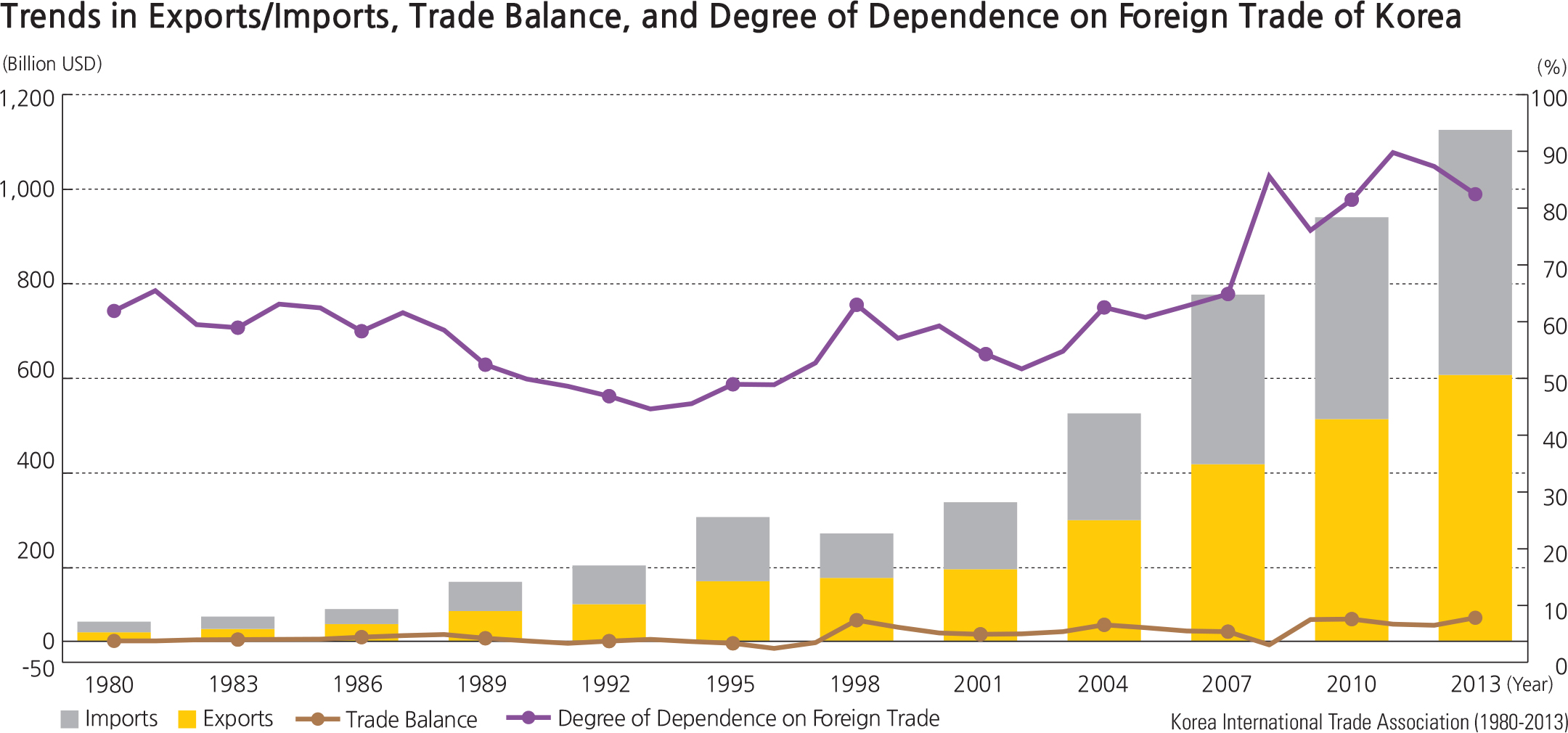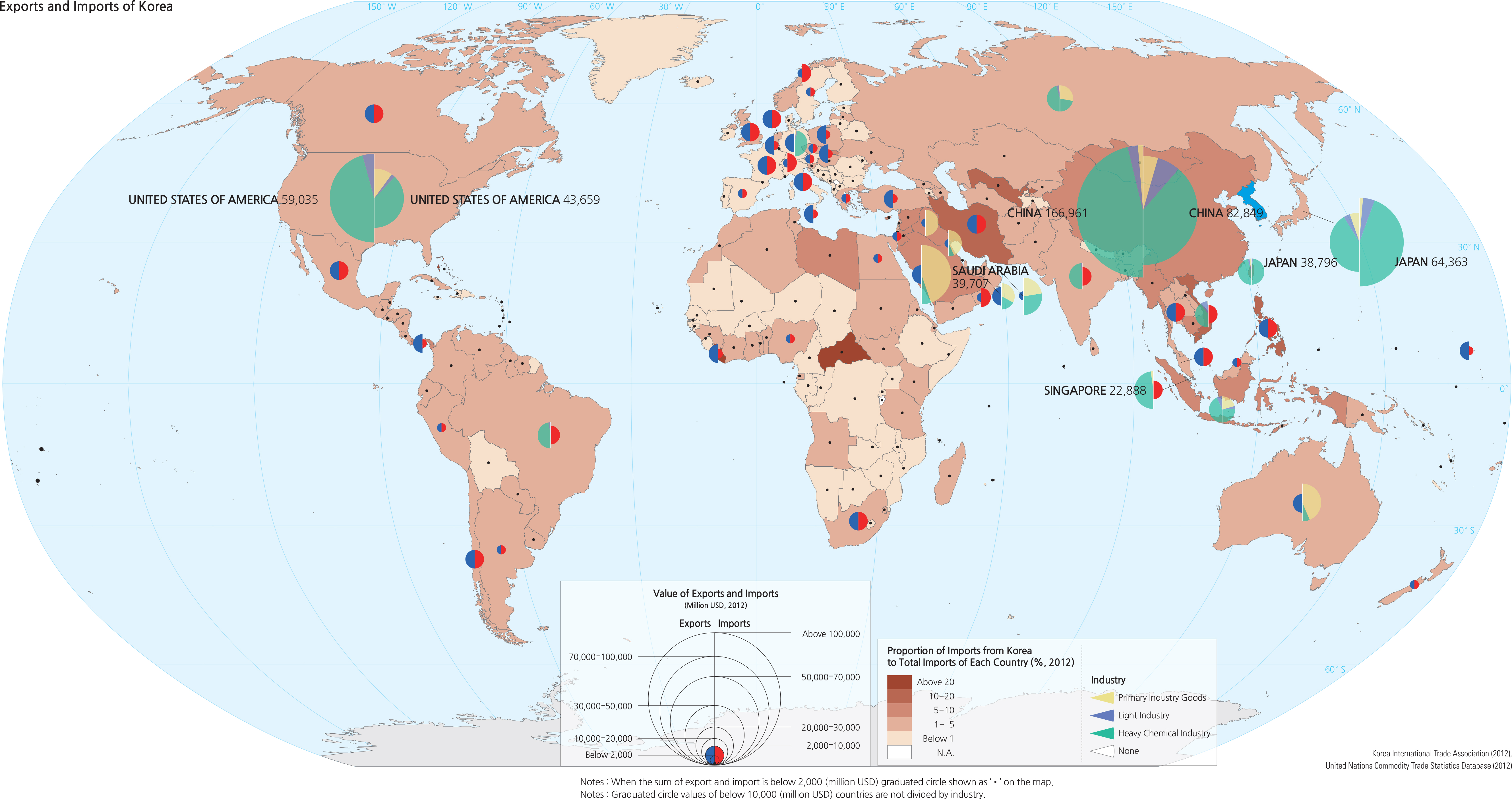Comprehensive Edition
International trade and investment is the exchange of capital, goods, and services across international borders or territories. It includes the international flow of tangible and intangible commodities such as finance, insurance, transportation, distribution systems, and information technologies, as well as the international flow of key production elements such as capital, labor, technology, and others. Furthermore, it includes a series of international agreements such as the Free Trade Agreements (FTA) because such international regulations or norms have a significant influence on labor, technology, and competition in the international economic environment. The level of Korean involvement in international trade and investment has strengthened significantly over the last five decades. The rapid growth in trading by Korea stems directly from export-oriented economic development strategies that were implemented by the government through a series of fiveyear plans beginning in 1962. For example, trading volumes Concomitantly, South Korea has experienced significant growth in imports despite a moderate downturn during the world economic crisis in 2008. The subsequent rise in oil prices and the importation of equipment have stimulated rising imports once again. Crude petroleum has been the most significant imported good, accounting for over 30% of value of total imports. Korean crude petroleum imports The main export partners for Korea are China, the US, Japan, Singapore, Vietnam, and the European Union (EU). China has been the top exporting partner since the early 2000s. Exports to China increased from 3.8 billion USD (6.1% of total exports) in 1989 to 173.6 billion USD (31.2% of total exports) by 2013. Exports to Vietnam also increased rapidly since the late 1990s due to the rapid growth of Korean foreign direct investments in Vietnam. The proportion of exports to advanced economies such as the USA, Japan, Singapore, and the EU has decreased. Along with this pattern of exports, imports have followed a similar trend. The major import partners for South Korea are China, Japan, the USA, and Saudi Arabia. Among those countries, China has been the top importer of Korean goods since 2007. The trade balance did show deficits in the 1980s, and these continued until the mid-1990s. The average trade balance from 1980 to 2013 was 88 billion USD, with the largest surplus of 44 billion USD in 2013, and the lowest deficit of 20.6 billion USD in 1996. Since the mid-1990s, Korea has posted mostly surpluses in large part due to the dramatic growth in exports. The average trade surplus between 2001 and 2013 was 22.3 billion USD. Since 2003, the largest surpluses came from trading with China. For example, a record surplus of 86.6 billion USD was posted from trading with China in 2013, accounting for 19.7% of total trade surplus of Korea. On the contrary, the trade deficit with Japan has increased from 2.8 billion USD in 1980 to 36.1 billion USD in 2010. The trade deficit with Japan has decreased since 2011 after diversifying import sources and after the 2011 earthquake in Japan.
|


